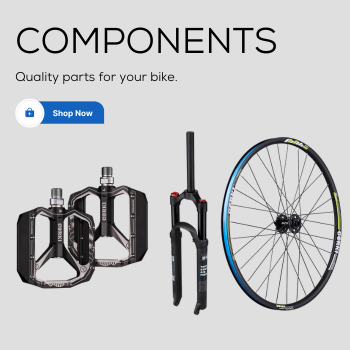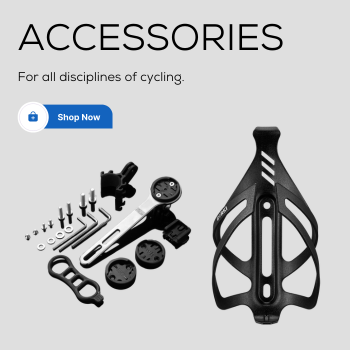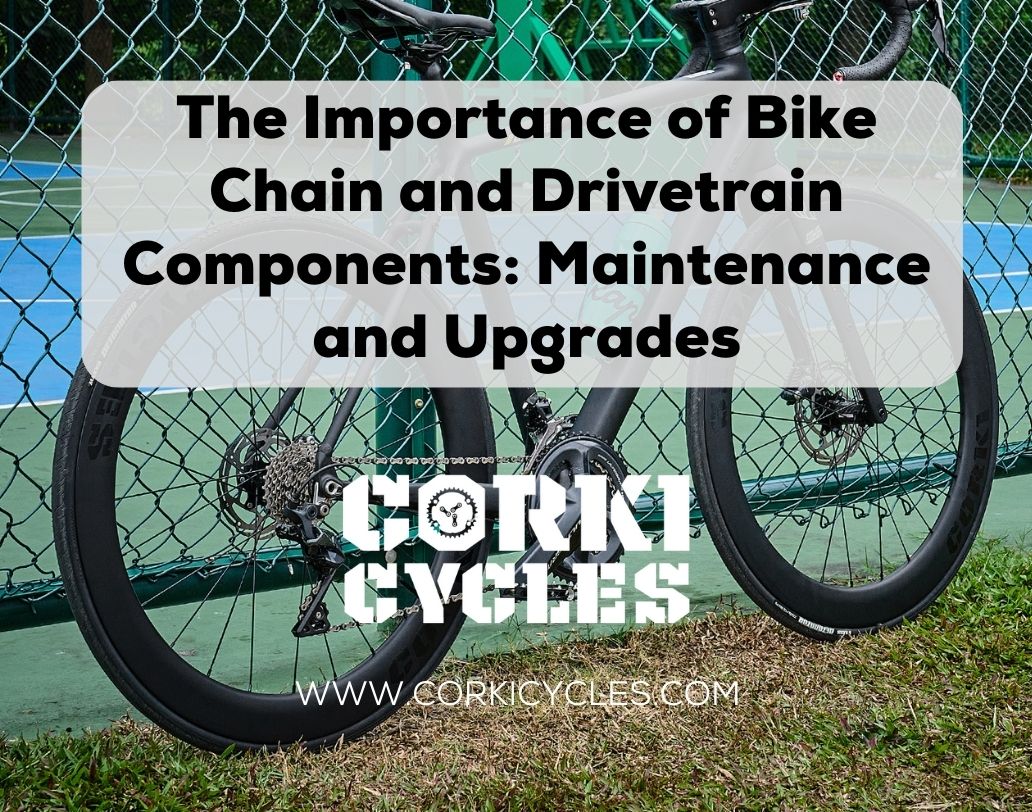
The Importance of Bike Chain and Drivetrain Components: Maintenance and Upgrades
Riding your bike is a blast, right? Have you ever noticed how awesome and simple they look? Well, guess what? There's more to it than meets the eye! Your bike has this cool system called the drivetrain that makes everything tick. In this article, we're diving into why these bike drivetrain parts are a big deal. Plus, we'll spill the beans on how to keep them in top shape with regular maintenance and upgrades. Let's roll into the good stuff!
What are the Main Bike Drivetrain Components?
The drivetrain is like the engine of your bike. It includes important parts such as the chain, crankset, chainrings, cassette(cog), derailleurs, and pedals. Each part has a special job in ensuring your energy from pedalling turns into movement. Let's take a closer look at these vital parts that work together to keep your wheels turning.
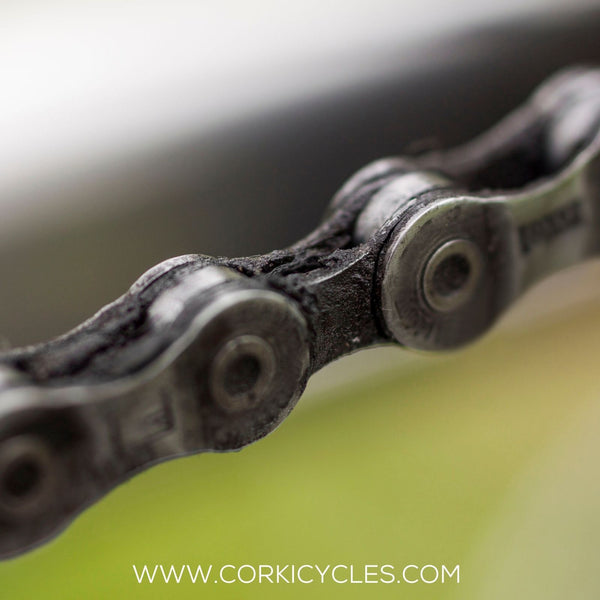
Bike Chain: The chain connects the chainring to the rear sprocket, transmitting power from the rider to the rear wheel. As you pedal, the chain engages with the chainrings and cassette, ensuring a smooth transfer of energy and propelling your bike forward.
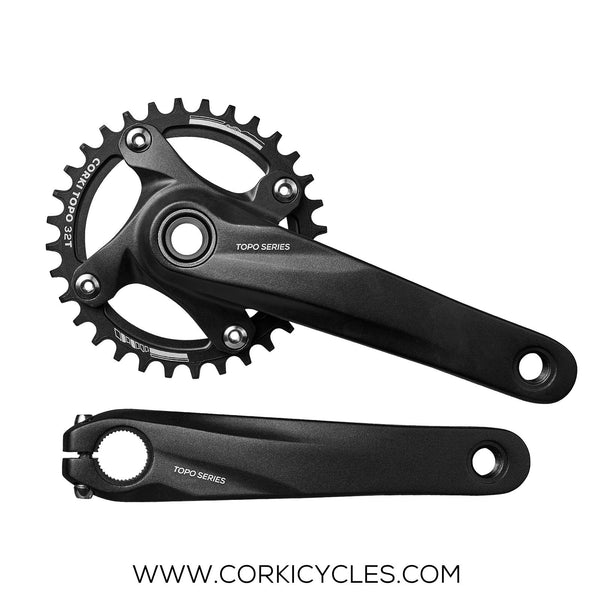
Crankset: When you pedal, the crankset converts that motion into the rotation needed to drive the chain. Then, make the bike wheels run. Cranksets vary in length depending on the size of the bike frame and the rider's leg length. Most are made of aluminum, but some inexpensive ones are made of steel. And some expensive ones are made of carbon fiber.

Chainring: Mounted on the crankset, chainrings are toothed wheels that work in tandem with the chain. Chainrings come in various sizes, identified by the number of teeth and application.
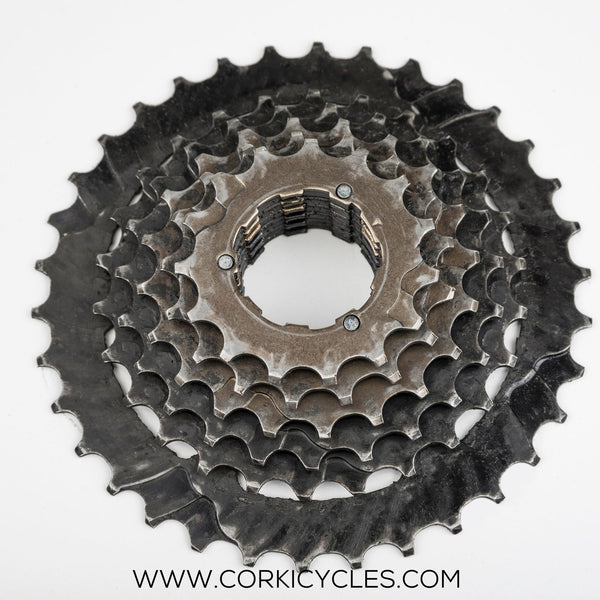
Cassette (Cog): The cassette is also known as the cog. It is a cluster of gears situated on the rear wheel hub. It complements the chainrings, offering a range of gear options. Shifting between different cogs enables you to tackle different terrains and conditions easily.
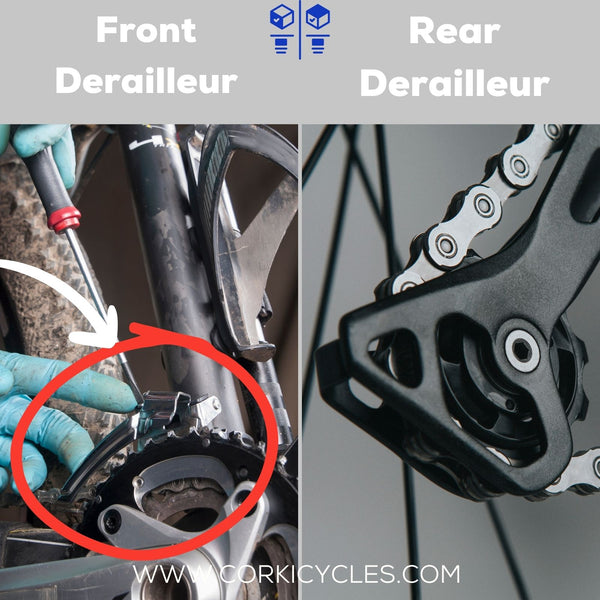
Derailleur: The derailleur is a movable arm that has two different parts. Front derailleur and rear derailleur. The front derailleur moves the chain from chainring to chainring and acts as a chain guide, keeping the chain aligned. The rear derailleur acts as a chain guide and chain tensioner. Precise movements of the derailleurs facilitate smooth gear changes, allowing you to adapt to the demands of the ride, terrain, and strenuousness.
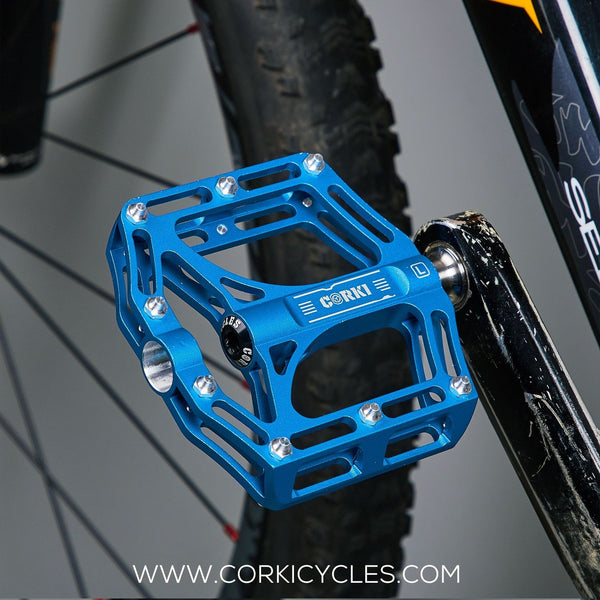
Pedals: While not directly part of the drivetrain, pedals play a critical role. Attached to the crankset, they provide the platform for your feet, completing the connection between your body and the drivetrain. As you pump your legs and turn your feet, you cause the cranks to turn. Many recreational and enthusiast cyclists prefer the adaptability that platform pedals offer. They allow you to ride in any shoe. Racers and more advanced riders often prefer "clipless" pedals. These pedals are used in conjunction with matching cleats that are attached to special shoes.
Why are Drivetrain Components So Important?
Power Transmission: Drivetrain components, including the chain, crankset, cassette, derailleurs, and pedals. The pedals make the cranks go, which spin the bottom bracket and chainrings. That action drives the chain, making the rear sprockets spin like crazy. It forms the system responsible for transferring the rider's pedaling power to the wheels. This power transmission is essential for the bike's forward movement.
Performance Impact: The efficiency of the drivetrain directly influences the bike's performance. If you take care of these parts, your bike works better. It becomes easier to ride and control and goes faster.
Adapting to Different Places: The drivetrain lets you change how hard or easy it is to pedal, helping you ride on different surfaces like uphill or downhill.
How to Maintain Bike Drivetrain Components?
As time passes, all that riding can make your bike parts gather dirt, grime, and gooey stuff called lubricant. It's like a messy party on your bike! But here's the deal – it can slow things down and even cause some damage if we don't clean our bikes well. Let's keep it rolling smoothly, alright? Next, we’ll walk you through some simple steps to maintaining your bike drivetrain.
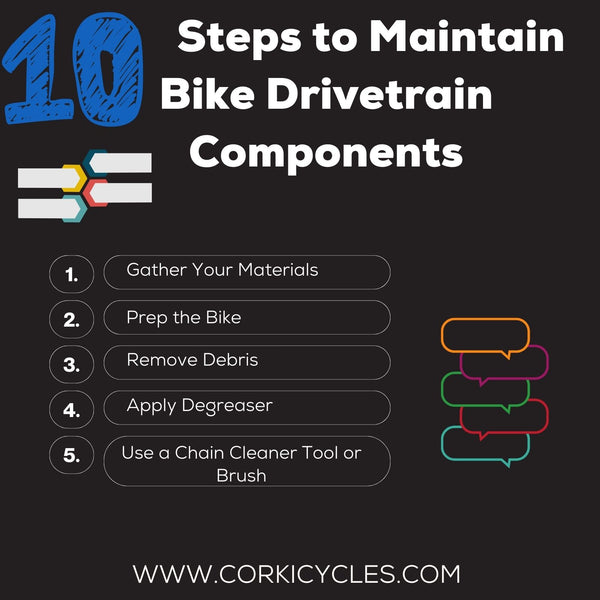
Step 1 - Gather Your Materials
Assemble all the materials you'll need for the cleaning process:
-
Bike Cleaner
-
Chain Degreaser
-
Chain Cleaning Tool
-
Chain Lubricant
-
Some rags or sponges
-
Brushes
-
A bucket and hose
Step 2 - Prep the Bike
Put your bike in a stable position, either by using a bike stand or by turning it upside down. Ensure the bike is secure before starting.
Step 3 - Remove Debris
Use a soft-bristle brush to gently remove loose dirt, mud, and debris from the chain, cassette, chainrings, and derailleurs. This initial step helps prevent excess dirt from getting into the drivetrain during the cleaning process. Then water your bike again, and we should be all good to concentrate on the all-important drivetrain.
Note: Please remember that don’t spray your bicycle with a pressure washer. It is because the water can get into the Bottom Bracket or Headset. This may eventually cause them to stop performing. Therefore, you'll have to get new ones.
Step 4 - Apply Degreaser
Spray or apply a bike-specific degreaser to the chain, cassette, and chainrings. Ensure thorough coverage, and let the degreaser sit for a few minutes to break down grease and grime. And then wipe clean with a brush or sponge.
Step 5 - Use a Chain Cleaner Tool or Brush
If you have a chain cleaner tool, fill it with a degreaser and attach it to the chain. Rotate the pedals backward to run the chain through the cleaner. If you don't have a chain cleaner tool, use a brush to scrub the chain thoroughly.
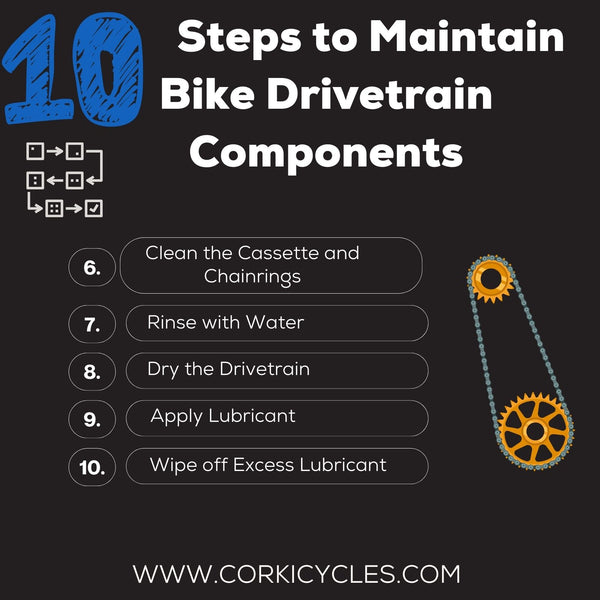
Step 6 - Clean the Cassette and Chainrings
Use a brush or an old toothbrush to clean between the cassette cogs and the teeth of the chainrings. Pay attention to hard-to-reach areas.
Step 7 - Rinse with Water
Rinse the drivetrain thoroughly with water to remove the degreaser and dislodged dirt. You can use a hose or a bucket of water for this step.
Step 8 - Dry the Drivetrain
Use a clean, dry cloth to wipe off excess water from the chain, cassette, chainrings, and derailleurs. Ensure that the drivetrain is completely dry before moving to the next step.
Step 9 - Apply Lubricant
Once the drivetrain is dry, apply a bike-specific chain lubricant to the chain. Ensure even coverage by rotating the pedals backward and applying the lubricant to each chain link. To apply the lubricant, hold the bottle above the inside of your chain. Apply a smooth lubricant flow while pedaling backward to cover the whole chain. Ensure the lubricant goes into the rollers. Pedal backward slowly for about 30 seconds to ensure it goes well.
Step 10 - Wipe off Excess Lubricant
After applying the lubricant, use a clean cloth to wipe off any excess. This helps prevent attracting unnecessary dirt and keeps the drivetrain cleaner for a more extended period.
By following these steps regularly, you'll not only keep your drivetrain running smoothly but also contribute to the overall longevity and performance of your bike. Regular maintenance helps prevent major issues. It keeps your bike in top condition for a more enjoyable riding experience.
Benefits of Regular Maintenance and Upgrades
Extended Lifespan:
Regular maintenance not only ensures the immediate performance of your bike but also extends the lifespan of expensive drivetrain components. Investing time in maintenance now can save you money on replacements in the long run.
Improved Efficiency:
A well-maintained chain and drivetrain result in smoother pedaling and more efficient power transfer, enhancing your overall cycling experience. Enjoying a smooth, efficient ride can also contribute to less fatigue during longer rides.
Cost-Effective:
Addressing minor issues through regular maintenance can prevent them from developing into more significant and costly problems. Small adjustments and replacements are generally more budget-friendly than waiting until a major overhaul is required.
In summary, the benefits of regular maintenance and upgrades go beyond just keeping your bike in good shape—they contribute to a safer, more efficient, and personalized riding experience while also saving you money in the long term.
Conclusion
The bike chain and drivetrain components are the unsung heroes of every cycling adventure. Regular maintenance and strategic upgrades are not just care practices. They are also investments in the ride's longevity, efficiency, and joy. By understanding the significance of each component and adopting a proactive approach to maintenance, cyclists can unlock the full potential of their bicycles.
Riders, if you have questions or want to share your biking stories, feel free to drop them below. Happy riding!

